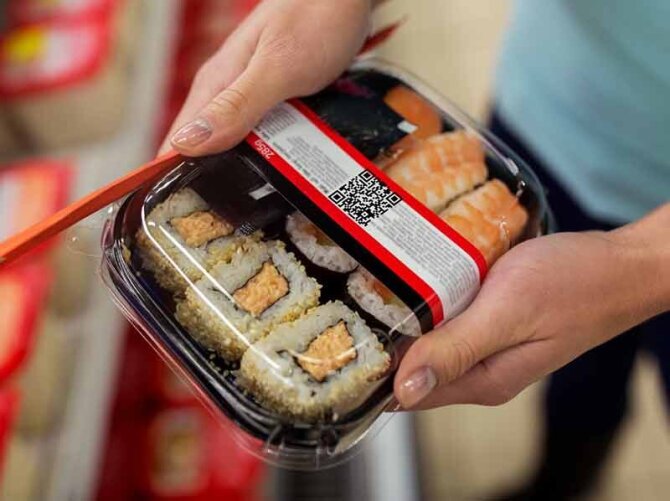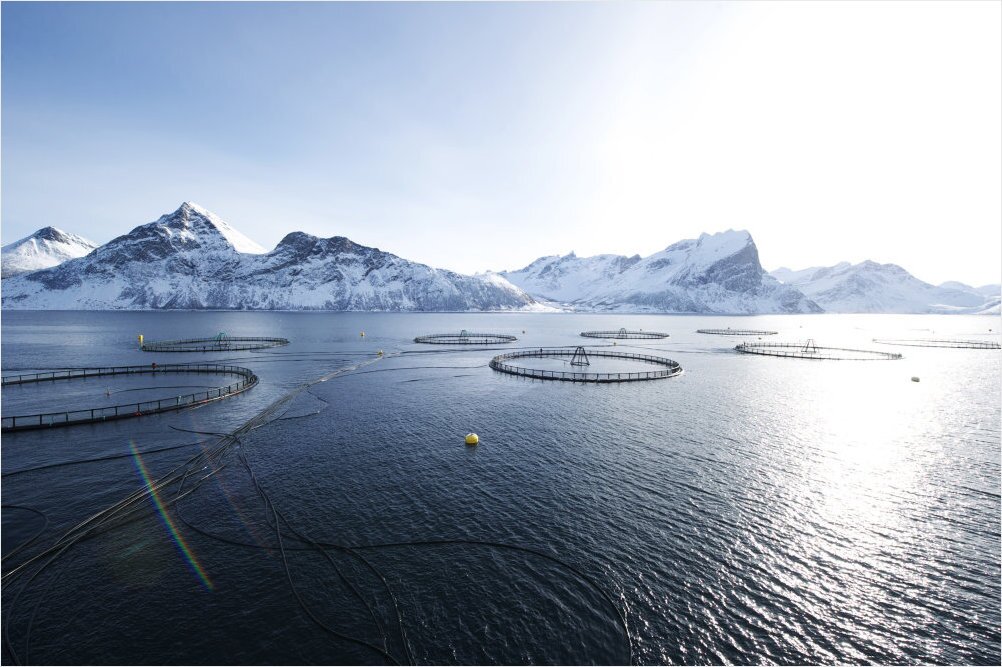The pandemic drove greater concerns for health and wellbeing, leading more of us to pursue healthier lifestyles. Meanwhile, ethical sourcing has increased in popularity as concerns for environment and food security intensify.
Together, these dynamics have ushered in a new era of conscious consumerism. And as the seafood industry caters for these with improved product information and transparency across the value chain, sustainable seafood is moving into focus as a nutritious ethically sourced protein.
In this article, we explore:
- Increasing interest in ethical consumption.
- Health and wellbeing’s boom beyond the pandemic.
- Rising demand (and concern) for alternative (alt) proteins.
- Gen Z: shaping the future of seafood.
- Future-forward organisations reassuring and engaging customers on sustainability.
- Improving communication with QR codes & origin labelling.
Increasing interest in ethical consumption
Ethical consumption is broad; covering aspects ranging from environment and health to individual wellbeing – for every species. Thanks to greater media and public attention, consumers are realising the impact of their food choices. Whether this is preserving the environment or food supply for future generations, or pledging support for ethical labour practices and animal welfare.
Sustainable seafood recognised for food security
There is growing respect for sustainable seafood’s role in feeding future generations. WorldFish has stated that sustainable ocean food systems can support future livelihoods and nutrition, and help global food systems achieve negative emissions by 2050.
At COP28 in Dubai, campaigners highlighted the potential for aquatic food systems to feed the growing global population – illustrating the growing recognition for seafood as a valuable protein, and the importance of managing fish stocks to safeguard availability for future generations.
Certifications are driving change
Programmes like the Marine Stewardship Council (MSC) and Aquaculture Stewardship Council (ASC) are serving as drivers, moving the industry toward sustainability while reassuring consumers that the seafood they eat is sourced responsibly. But education is still needed to help consumers understand what these certifications mean.
Provenance & sustainability influence purchases
- More than two thirds (68%) seafood consumers say availability of sustainable seafood influences their choice of retailer.
- More than 4 in 10 say they'll pay more for sustainable fish or seafood.
Thanks to this heightened awareness, consumers are aware of the impact of their choices. So they’re asking more questions and making conscious decisions to buy sustainable and ethically sourced seafood.
This highlights opportunities for retailers, distributors and producers to improve and communicate traceability, raising sustainable seafood’s value as a result.
Origin labelling reassures consumers
- 71% of seafood consumers say origin labelling influences their seafood purchases
Origin labelling provides a valuable shortcut, reassuring time-strapped consumers on the provenance of seafood. This is having a significant effect too. We asked 18,000 seafood consumers worldwide whether origin labelling influences their seafood purchases and 71% suggested it does.
But people are confused…
The US Food Industry Association (FMI) has found that while seafood consumers show growing preference for "farm-raised" (20%) and "wild-caught" (45%) products, they’re unsure about these terms. Its 2023 seafood study revealed 43% either partially understood or were not sure what wild-caught means; 51% were not clear what farm-raised means; and 71% didn’t understand the term "aquaculture".
This indicates a need for education to help consumers make informed choices. This is before issues like antibiotic use in farming or deforestation-free feeds are tackled. Particularly as the seafood industry will need innovative fish feeds if it is to meet growing demand for essential proteins.

Photographer: Tom Haga
Health and wellbeing’s boom beyond the pandemic
One of Covid-19’s biggest legacies has been a greater focus on health and wellbeing – and the prevention of ill-health. And a key part healthy lifestyle is, of course, diet.
According to a OnePoll survey, 70% of Americans consider themselves more health conscious because of the pandemic. It revealed an increase in health awareness too: 64% said they were motivated to lose weight because they know it can impact immunity. Six in 10 also had a greater understanding of how healthy diet and lifestyle protect long-term health.
In some regions, it will be more about lifestyle, the way we live and how we treat our body, Elsewhere, coming out of the pandemic, it is more about the effect of our way of living and wanting to be healthier.
Christian Chramer
CEO of the NSC
Diets are changing
A growth in vegan, vegetarian, pescatarian and flexitarian diets means that people are reducing meat – and, to a lesser degree, fish consumption.
In the US for example, research reveals 15% of Americans consider themselves flexitarian – a figure that rises among 24-39-year-olds. Another survey indicates that 47% of Americans in this age group think of themselves as flexitarian and are specifically looking to reduce meat in their diets.
A recent US study also found consumers more likely to choose vegan food labelled as ‘healthy’ or ‘sustainable’ rather than ‘vegan’. These trends and a growing awareness of the environmental impact of animal proteins, has opened the door for ‘plant-based’ proteins – and the potential for lab-grown meats too.
Seafood acknowledged as a healthy protein
Despite consumers rethinking their consumption of animal proteins, seafood is known to play an important role in healthy lifestyles. Research consistently points to the health benefits in eating it regularly; weight management to reduce risk of obesity, enhanced nerve cell function, inflammation regulation and support for a robust immune system.
Evidence also shows that eating seafood regularly can lower the risks of both Type 2 diabetes and cancer. Its qualities as a lean protein abundant in nutrients like omega-3 fatty acids, vitamins and minerals, provide compelling reasons to eat seafood more regularly.
Discover how healthy proteins are being "snackified":
How "snackification" and innovation are transforming the global seafood market.
Rising demand (and concern) for alt proteins
From Burger King to the "meat" aisle at your local supermarket, plant based "fake meats" have become a much talked-about trend. Although sales growth plateaued last year, these products continue to appeal to both health-conscious and eco-conscious consumers. And the World Economic Forum suggests that, by 2035, alternative proteins could make up at least 11% of global protein consumption.
Plant-based seafood is emerging
This isn’t just about plant-based meat alternatives. The Good Food Institute (GFI) says plant-based and cultivated seafood will be needed to meet global demand in less than a decade. It predicts demand for seafood will rise by as much as 30% by 2030 (from 2010 levels). And aquaculture growth can only meet demand for 17 countries, leaving 170 more with a critical shortfall.
Alternative seafood is already on supermarket shelves. In the UK, Morrison’s began stocking Tuno back in 2019. This canned ‘alt tuna’ is made of 60% textured soya protein, spring water, sea salt, yeast extract, seaweed powder, potassium chloride and Dha algal oil, and retails at £1.49 for 140g (NOK19.49 at the time of writing).
While plant-based seafood fills a gap, it doesn’t serve the same purpose as alternative meats for many consumers – largely because meat, red meat in particular, is already considered unhealthy and has a huge environmental burden. Seafood on the other hand, is established as a healthy choice, despite concerns around sustainability in recent years.
Concerns around alt proteins and UPFs
These products come with a word of caution. Some plant-based proteins are clearly unhealthy fast-foods, but others are marketed with a health angle despite being packed full of unrecognisable ingredients. Over the past few years, there has been increasing media and public attention on ultra-processed foods (UPFs) - spurred on by the high-profile release of the bestseller Ultra Processed People by Dr Chris van Tulleken.
And medical research has shown that consuming these is related to a "higher risk of adverse health outcomes." Most alt proteins sit within this category, consisting of plants like soy or pea protein, processed with salt, flavourings and preservatives. This has caused a consumer backlash and a return to simpler proteins – like legumes, beans, sustainable meats or seafood.
Gen Z: shaping the future of seafood
According to recent research by McKinsey, climate change is one of the issues Gen Z cares about most. Many describe themselves as environmentally conscious, expecting sustainability commitments from companies and organisations. And Gen Zers frequently call for reform on personal, public, and global scales to prevent future catastrophe.
They believe in doing their part to help stop the intensification of climate change and establish greater equity for all. And this is influencing their seafood choices, which emphasise sustainable sourcing, fair trade and companies with ethical practices.
Despite this commitment, Gen Z still appears to lack understanding around sustainability issues. This emphasises a need for accessible information and education to help them to make informed decisions.
- In US research, Gen Z participants consistently highlighted the importance of sustainable seafood, expressing concern for overfishing, habitat destruction and the need for stricter regulations. They also acknowledged barriers like complex seafood regulations and a lack of information to make environmentally conscious choices.
- In Australia, MSC research found 88% of Gen Z respondents were ‘overwhelmingly concerned’ about the availability of seafood for their children and grandchildren. But 86% admitted they found it hard to know whether seafood was sustainable or did not know what sustainable seafood is. In fact, 65% believed schools and universities could do more to educate around climate change and its impact on the ocean.
- An Italian study found environmental consciousness did not directly correlate with the frequency of sustainable seafood consumption. Instead, students expressed a preference for solutions like marine protected areas and the use of new or discarded species to meet future seafood supply and demand.
Future-forward organisations
Fortunately, a handful of organisations are leading the way, auditing their complex supply chains to ensure sustainability and ethical sourcing. They’re communicating this information to consumers in a clear, engaging way too. This is resulting in greater clarity for customers, which builds trust and loyalty. Plus, they’re engaging them to collectively achieve organisational ESG goals supporting people and planet.
Reviewing supply chains
To build consumer trust and differentiate themselves, brands are publishing detailed information about sourcing, production and sustainability - a trend the World Benchmarking Alliance (WBA) expects to intensify in 2024.
Although this is a step in the right direction, many are still vague about activities auditing illegal, unreported and unregulated (IUU) fishing in their supply chains. Further, it is crucial for companies to trace seafood products from boat to plate to enhance traceability, but the complexity of supply chains can make this particularly challenging.
Read more about how technology is supporting sustainability communications:
How demand for transparency is accelerating digital transformation in the value chain.

Photographer: NSC
Improving product labelling & communication
QR codes
Successfully used by many manufacturers, QR codes offer huge potential for communicating ethical sourcing and provenance. However, customers don’t always have time to scan products when they’re in a hurry.
According to Kjetil Hestad, director of aquaculture and market access, Sjomatbedriftene:
“To pick up your phone and scan a QR code to get that information, to read it and make a decision on whether you take a product or not? That’s a time-consuming process – and one that is certainly off-putting for many consumers.”
He explains consumers need more education on what information is available to encourage QR code adoption. In the meantime, origin labelling is achieving success as a short-hand alternative for time-strapped shoppers who want to know more about their seafood.
Origin labelling
When we asked consumers across 17 countries whether clearly marked country of origin labelling was relevant to their decision making, there were highs of over 80% in some markets.
Are fish and seafood products marked with country of origin relevant or irrelevant when you decide where to shop?
| RELEVANT | |
| China | 86,4% |
| Vietnam | 84,6% |
| South Korea | 82,0% |
| Taiwan | 80,2% |
| Italy | 78,2% |
| Thailand | 75,2% |
| France | 74,0% |
| Portugal | 72,2% |
| Spain | 72,2% |
| UK | 71,0% |
| Saudi Arabia | 66,6% |
| Brazil | 62,0% |
| US | 61,2% |
| Japan | 59,9% |
| Sweden | 59,4% |
| Germany | 57,7% |
| Norway | 51,8% |
South Korea is up with China and Vietnam, and according to NSC country manager, Mia Sæetre Bernhardsen, consumer interest is likely due to widespread concern over ocean pollutants. She says,
“Green consumers are even more conscious about where their food comes from. [This is a] real opportunity for the Seafood from Norway mark, for that stamp shows this food comes from somewhere far, far away, from very cold and clear waters.”
Discover what retail strategies consumers find least acceptable while prices are rising

M&S: Engaging customers in sustainability
Marks & Spencer (M&S) – a British brand synonymous with quality – illustrates how transparency and the pursuit of sustainability can build customer loyalty and trust.
Ever since the bold launch of its ‘Plan A’ Sustainability Strategy in 2007, M&S has been at the forefront of sustainable production and consumption in retail. It was the first UK retailer to report seafood sourcing back in 2012. And in its refined ‘Plan A 2025’, M&S acknowledged a gap in sustainability communications, committing to "be open and transparent and inspire customers to live more sustainably".
Today, it is signed up to a host of seafood and sustainability initiatives and works closely with the World Wide Fund for Nature (WWF) and the Marine Conservation Society (MSC) to ensure the almost 60,000 tonnes of seafood it uses annually is sourced responsibly. It communicates this through QR codes on seafood products and an interactive supplier map, which shows customers where their seafood comes from, how it’s caught and what certifications it holds. Alongside, the brand campaigns extensively in the media on sustainability and ethical sourcing.
The result? M&S has successfully aligned its brand with integrity and a concern for people and planet. It has also engaged customers in sustainability concerns, empowering them to collectively make a difference.
Conclusion: A transformative movement reshaping industries
Conscious consumption is not a trend; it’s a transformative movement reshaping industries and consumer behaviours worldwide. The shift towards sustainable seafood is driven by converging factors:
- Environmental awareness
- Health and welfare concerns
- Regulatory frameworks encouraging sustainable practices
Now more than ever, consumers – particularly Gen Z – are interested in the origins of seafood, how it’s produced, and its impact on the environment.
This scrutiny is bringing about change in our industry. Major retailers and seafood companies are adopting transparent and sustainable practices. They’re communicating these too, fostering brand loyalty and trust through encouraging consumers to join them on their sustainability journey.
Looking forwards, the importance of sustainable seafood can only grow. And our industry's response will shape not just the future of seafood but also the ecological and economic landscape of coastal communities around the world.

